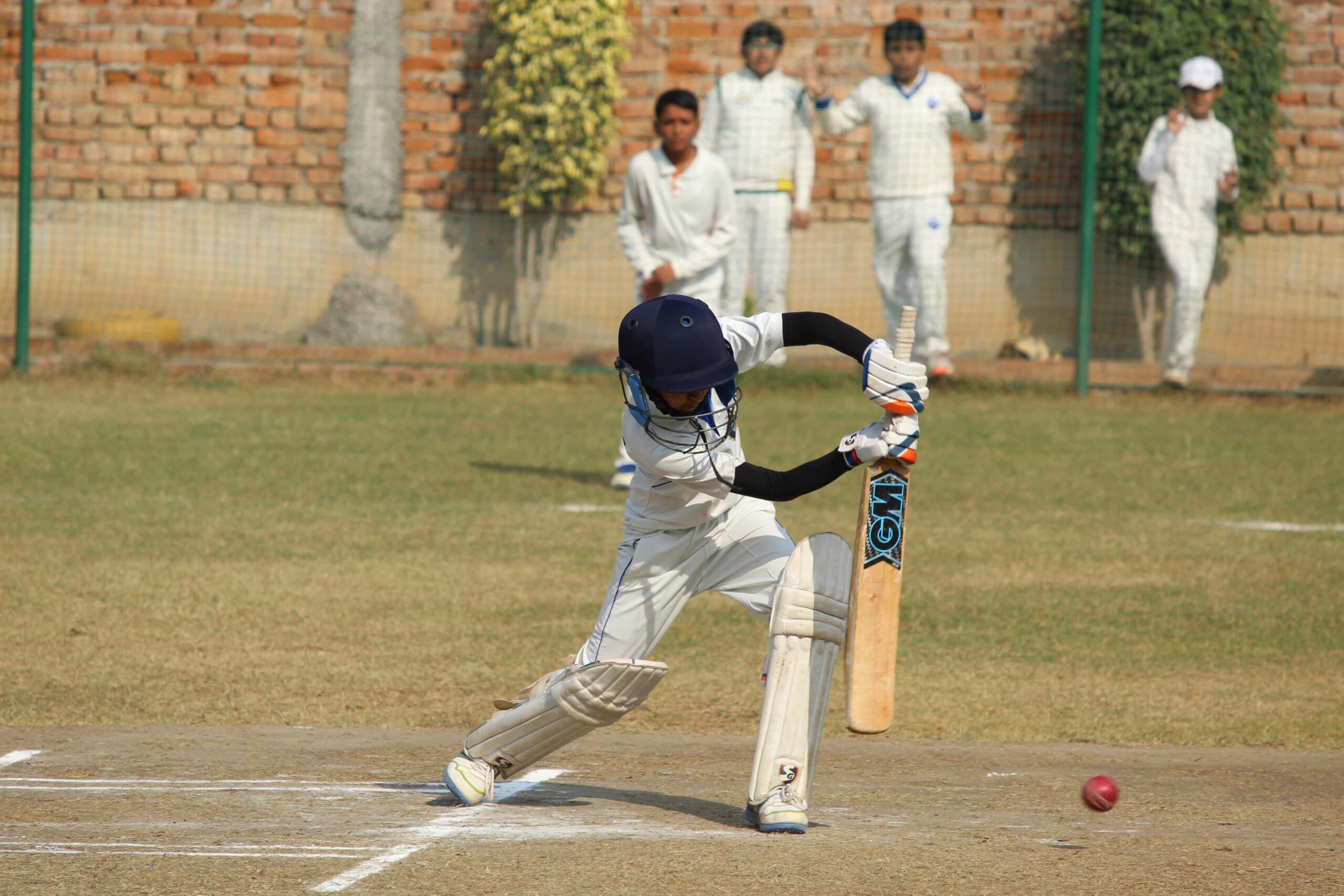Cricket in India: From Colonial Legacy to IPL Glory – The Nation’s Greatest Love Affair
Picture this: it’s a sweltering afternoon in Mumbai, and despite temperatures hovering around 40°C, millions of Indians have their eyes glued to television screens, smartphones, and radios. Traffic literally stops. Markets close early. Even wedding ceremonies get postponed. What could possibly command such devotion? Cricket, of course—India’s unofficial religion and the nation’s greatest cultural unifier.
Having grown up watching cricket with my grandfather, I’ve witnessed firsthand how this sport transcends every boundary imaginable. Social class? Irrelevant when Sachin’s batting. Religious differences? Forgotten when India’s playing Pakistan. Regional rivalries? Set aside when the Indian flag flies high after a World Cup victory. Cricket isn’t just a game in India—it’s a shared emotional experience that binds 1.4 billion people together.
From Colonial Imposition to National Passion
Cricket’s journey in India began rather unceremoniously in the 1720s when British sailors and traders started playing the game in ports along the western coast1. What’s fascinating—and honestly quite ironic—is how a sport imposed by colonial rulers eventually became the very vehicle through which independent India would assert its dominance on the global stage.
The Parsi community deserves massive credit here (something that doesn’t get mentioned enough, in my opinion). They were the first Indians to embrace cricket seriously, forming the Oriental Cricket Club in Bombay way back in 18482. These pioneers didn’t just play the game—they revolutionized it with their unique style and approach.
The establishment of the Board of Control for Cricket in India (BCCI) in 1928 marked a turning point—finally, Indians had control over their own cricketing destiny3. But here’s what really gets me excited: even during the independence struggle, cricket served as a subtle form of resistance. When Indian teams defeated English sides, it wasn’t just sport—it was symbolism.
Fascinating Cricket Fact
India played its first official Test match in 1932 against England at Lord’s, losing by 158 runs. However, this match featured the legendary Lala Amarnath, who became the first Indian to score a Test century—a moment that sparked nationwide celebrations and marked the beginning of India’s Test cricket journey.
The pre-independence era wasn’t just about learning the game—it was about adapting it to Indian conditions, temperament, and style. Players like CK Nayudu and Vijay Merchant laid the foundation with their aggressive yet technically sound approach. What strikes me most about this period is how cricket became a meeting ground where regional differences dissolved. A Tamil player could partner with a Bengali batsman, and together they’d represent India’s hopes and dreams.
The Golden Era: When Cricket Became Religion
June 25, 1983. Lord’s Cricket Ground, London. If you’re an Indian cricket fan, these details alone send shivers down your spine. I wasn’t born then, but growing up, this date was spoken about in my household with the same reverence reserved for Independence Day. Kapil Dev lifting the World Cup—that single image transformed cricket from a sport to an obsession across the subcontinent4.
What people don’t fully appreciate is how that victory changed everything. Suddenly, cricket wasn’t just entertainment—it became aspiration. Every gully (street) in India witnessed kids trying to replicate Kapil’s helicopter shot or Mohinder Amarnath’s defensive technique. The 1983 triumph proved that Indians could conquer the world at this “English” game, and honestly? That psychological barrier breaking was probably more significant than the trophy itself.
The Sachin Phenomenon: Numbers That Tell a Story
Between 1989 and 2013, Sachin Tendulkar didn’t just play cricket—he WAS Indian cricket. The statistics are mind-boggling: 100 international centuries, 34,357 runs across formats, and 664 international matches. But here’s what really matters: for 24 years, an entire nation’s mood depended on whether Sachin got out early or played a masterful innings.
The Sachin era deserves its own chapter in Indian cultural history, not just sporting history. I remember bunking college classes to watch his innings—and so did half the country! When Sachin walked out to bat, productivity across India dropped by an estimated 25%5. That’s not just fandom; that’s national devotion reaching unprecedented levels.
| Player | Era | Signature Achievement | Cultural Impact |
|---|---|---|---|
| Kapil Dev | 1978-1994 | 1983 World Cup Victory | Transformed cricket into mass obsession |
| Sachin Tendulkar | 1989-2013 | 100 International Centuries | Became cricket’s first global superstar |
| Rahul Dravid | 1996-2012 | 13,288 Test Runs | Epitomized dedication and technique |
| Anil Kumble | 1990-2008 | 619 Test Wickets | Proved spin bowling’s dominance |
But let’s talk about the supporting cast—because cricket, like Indian cinema, has always been about ensemble performances. Rahul Dravid, with his meticulous approach and impeccable technique, taught an entire generation that patience and persistence could overcome raw talent6. Anil Kumble showed that even with an unorthodox action, sheer determination could make you a wicket-taking machine.
The 1990s and early 2000s weren’t just about individual brilliance—they were about India developing a distinct playing style. We became known for our batting prowess, spin-friendly conditions, and passionate crowds. Away tours became pilgrimages for Indian fans, and honestly, the sight of tricolor flags waving at Lord’s or the MCG still gives me goosebumps.
What’s particularly striking about this golden era is how cricket began reflecting India’s economic liberalization. As the economy opened up, cricket became more commercial, more global, and more accessible through television. Star Sports and Doordarshan brought matches into every Indian household, creating shared experiences across the vast subcontinent7.

The IPL Revolution: Cricket Meets Bollywood
April 18, 2008. The first ball of the Indian Premier League was bowled, and honestly? Indian cricket was never the same again. I still remember the skepticism—would this Twenty20 format cheapen the game? Could regional franchises work in cricket-mad India? Boy, were the doubters wrong! The IPL didn’t just succeed; it revolutionized cricket globally and created a template that every other league now follows8.
What Lalit Modi and the IPL creators understood brilliantly was that cricket needed to evolve with India’s changing demographics. Younger audiences wanted faster entertainment, more glamour, and shorter formats that fit their lifestyle. The IPL delivered all of this—and then some. Suddenly, cricket matches became events featuring Bollywood stars, international cheerleaders, and music that could rival any concert.
- Economic Impact: The IPL’s brand value reached $6.8 billion by 2023, making it one of the world’s most valuable sports leagues
- Player Earnings: International stars could earn more in two months of IPL than entire years playing for their national teams
- Viewership: Over 400 million viewers tune in globally, with digital viewership growing 50% year-over-year
- Discovery Platform: The league has unearthed talents like Jasprit Bumrah, Hardik Pandya, and Rishabh Pant
The genius of the IPL lies in its city-based franchise model. As someone who’s lived in multiple Indian cities, I can tell you that regional pride runs deep here. When Chennai Super Kings play Mumbai Indians, it’s not just cricket—it’s regional identity on display. The yellow jerseys of CSK represent Tamil pride, while MI’s blue symbolizes Mumbai’s cosmopolitan spirit9.
IPL’s Global Influence
The IPL model has been replicated worldwide—from the Big Bash League in Australia to the Caribbean Premier League. More importantly, it changed how cricket is broadcast, marketed, and consumed. The concept of strategic timeouts, player auctions, and franchise ownership has become standard across T20 leagues globally.
But let’s address the elephant in the room—controversies. The IPL hasn’t been without its challenges. Spot-fixing scandals in 2013 shook the tournament’s credibility10. However, what impressed me was cricket’s resilience. Instead of backing down, the BCCI implemented stricter monitoring, brought in the Anti-Corruption Unit, and emerged stronger. That’s very Indian, actually—facing adversity head-on and coming back stronger.
| Franchise | Titles Won | Iconic Players | Cultural Identity |
|---|---|---|---|
| Mumbai Indians | 5 | Rohit Sharma, Jasprit Bumrah | City of Dreams’ champions |
| Chennai Super Kings | 4 | MS Dhoni, Suresh Raina | South Indian pride and loyalty |
| Kolkata Knight Riders | 2 | Gautam Gambhir, Andre Russell | Bengali passion and intellect |
The technological integration in IPL has been phenomenal too. From Decision Review System (DRS) to real-time analytics displayed during broadcasts, the league embraced innovation like no other11. As someone who works in tech, I appreciate how cricket analytics have evolved—ball-by-ball predictions, player performance metrics, and even analyzing batting patterns using AI.
What really excites me about the IPL’s influence is how it’s democratized cricket. Previously, playing for India required navigating complex domestic structures, political connections, and geographical advantages. The IPL changed that—raw talent from small towns could suddenly command million-dollar contracts. Players like Jasprit Bumrah (from Ahmedabad’s suburbs) and Washington Sundar (from Chennai’s cricket academies) became household names through IPL exposure12.
Contemporary Cricket: Building the Future
As I write this in 2024, Indian cricket stands at an absolutely fascinating crossroads. We’ve got Virat Kohli still performing at elite levels in his mid-thirties, Rohit Sharma leading with tactical brilliance, and young guns like Shubman Gill and Rishabh Pant ready to carry the baton forward13. But what really gets me excited isn’t just the star power—it’s the depth and diversity of talent emerging from every corner of the country.
The women’s cricket revolution deserves special mention here. Mithali Raj’s retirement marked the end of an era, but players like Smriti Mandhana, Harmanpreet Kaur, and Jemimah Rodrigues are carrying forward the legacy beautifully14. The Women’s Premier League, launched in 2023, has already changed the landscape dramatically—female cricketers finally have a platform that provides both recognition and financial security.
- Infrastructure Development: Over 50 world-class cricket stadiums across India, with Ahmedabad’s Narendra Modi Stadium being the world’s largest cricket venue
- Grassroots Programs: The BCCI’s coaching certification and youth development programs now reach over 2 million aspiring cricketers annually
- Technology Integration: Advanced analytics, biomechanics analysis, and AI-powered coaching methods are standard at elite levels
- Global Influence: Indian coaches, administrators, and consultants are now sought after worldwide
The challenges, though, are equally significant. Climate change is affecting playing conditions—I’ve personally witnessed matches disrupted by unseasonal weather patterns that weren’t common a decade ago15. The mental health aspect is gaining attention too, with players like Virat Kohli openly discussing performance anxiety and the pressure of representing 1.4 billion people’s expectations.
Looking ahead, I’m particularly bullish about cricket’s role in India’s soft power projection. When Indian teams tour abroad, they carry more than just sporting ambitions—they represent a modern, diverse, and dynamic India. The success of players from smaller cities and rural backgrounds sends a powerful message about India’s inclusive growth story16.
The economic ecosystem around cricket continues expanding too. Fantasy cricket platforms engage millions, sports analytics is becoming a career option, and cricket-based content creation provides livelihoods for thousands. It’s not just about playing cricket anymore—it’s about an entire economy built around the sport’s popularity and reach.
As someone who’s followed cricket religiously for over two decades, I’m genuinely optimistic about the future. Yes, there are challenges—from workload management to format proliferation to maintaining the spirit of the game amid commercial pressures. But cricket in India has always adapted, evolved, and emerged stronger. From surviving colonial intentions to embracing T20 revolution, the sport has shown remarkable resilience and adaptability.
Mobile readers: Swipe tables horizontally to view complete data
Cricket’s journey in India—from colonial legacy to IPL glory—mirrors the nation’s own transformation. It’s a story of resilience, passion, adaptation, and ultimately, triumph. As we look toward the future, one thing remains certain: as long as there are Indians dreaming of representing their country, cricket will continue to be much more than just a sport—it will remain the thread that weaves together the incredible tapestry of Indian society.
References


